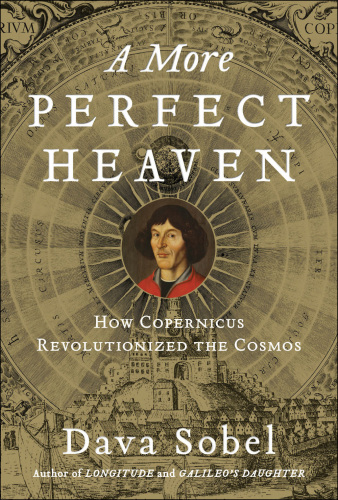
A More Perfect Heaven
How Copernicus Revolutionized the Cosmos
کتاب های مرتبط
- اطلاعات
- نقد و بررسی
- دیدگاه کاربران
نقد و بررسی

July 25, 2011
Sobel, author of the bestselling Longitude and Galileo's Daughter, brings something different to the bulging Copernicus canon. She wants to know why Nicolaus Copernicus (1473â1543) waited till shortly before his death to publish the universe-expanding ideas that he had previously only quietly circulated among other scientists. Her conclusion: in the midst of Martin Luther's challenge to the Catholic Church, Copernicus, himself a Church canon, feared the Church's response to his radical notion that Earth revolved around the Sun. His thesis, of course, altered nothing less than the our view of our place in the cosmos. Daringly, Sobel embeds within a factual narrative a two-act play in which she imagines the relationship between the aging Copernicus and a young mathematician (and Lutheran) named Georg Joachim Rheticus, who Sobel says "convincedâ the great astronomer "to publish his crazy idea.â Delivered with her usual stylistic grace (and here, a touch of astrological whimsy), Sobel's gamble largely succeeds in bringing Copernicus and his intellectually and religiously tumultuous time alive. B&w illus., maps.

June 1, 2011
Sobel (The Planets, 2005, etc.) offers another meaty-while-mellifluous story of science.
The author elegantly fashions the life of Copernicus as a two-act play bracketed by historically documented narratives that cover the periods before and after the arrival of Georg Joachim Rheticus at Copernicus's Polish doorstep in 1539. Some 30 years earlier, Copernicus had roughed out a heliocentric theory of the universe and quietly distributed it to a number of mathematicians. Word of it reached the ears of Rheticus, a 25-year-old professor of mathematics at the university in Wittenberg. He arrived at Copernicus's house as an "unexpected guest" and an altogether problematical one: a Lutheran during a time of anti-heretical fervor. Sobel draws Copernicus as a devout Catholic, but not unsympathetic to the Lutherans; he reluctantly agreed to Rheticus staying on when the youth awakened in him the desire to finish his great work and get it published. Sobel presents an illuminating piece of work, bringing to life the old man and the young man's days spent together and in particular Rheticus' coming to terms, the bending of his mind, around Copernicus's theory, which was more radical than he understood. Readers are fit squarely in Rheticus' shoes via Sobel's neat act of transport, there to share his bafflement and resistance. The book closes with the tale of the fate of On the Revolutions; just as Copernicus had worried, it dismayed the hidebound and the "babblers, who claim to be judges of astronomy, although completely ignorant of the subject...such men are not above twisting some passage of Scripture to their purpose, to censure me."
A liquid entertainment of choice passages on the thoughts and deeds of Copernicus.
(COPYRIGHT (2011) KIRKUS REVIEWS/NIELSEN BUSINESS MEDIA, INC. ALL RIGHTS RESERVED.)

June 1, 2011
Author of such engrossing international best sellers as Longitude, Sobel has the knowledge and writerly grace to explain what Copernicus accomplished--and how youthful German mathematician Georg Joachim Rheticus convinced him to publish On the Revolutions of the Celestial Spheres and change the world. A book on science and personality that should intrigue us all; with a 14-city tour.
Copyright 2011 Library Journal, LLC Used with permission.

























دیدگاه کاربران